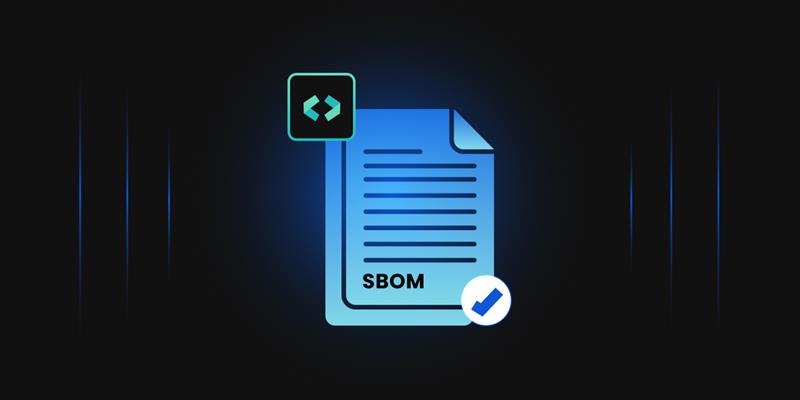DevOps
DevOps, in very simple words, is a combination of Development (Dev) and Operation (Ops) to enhance software’s speed, security, and development. The DevOps practice enables the development team to accelerate the development process through continuous integration, automation, and collaboration, making the building process more iterative. DevOps aims to shorten the software development process and achieve continuous delivery.
The efficient development circling DevOps principles helps organizations better understand their customer needs and compete effectively in the market. One of the biggest cloud computing and e-commerce organizations in the world, Amazon, implemented DevOps to improve its infrastructure management. The company started using automation tools like AWS CloudFormation and AWS Elastic Beanstalk to make the process of resource provisioning and scaling easier.
While speed and efficiency are essential factors in software development, product security shouldn’t be an afterthought. When code signing is integrated into a DevOps pipeline, it adds a layer of security and trust among users as it helps to confirm the integrity of the software packages and ensuring its authenticity.
Making strong security a priority initially reduces the need to have recovery measures later in the development cycle. This frees up resources which can be used for other essential operations. If there is weak security, automating the development process can be risky as processes or scripts can have vulnerabilities in it which could be easily exploited by attackers.
Code Signing
Code signing is when a developer digitally signs software packages, executable files, or scripts with a cryptographic signature. This signature is used as proof that the software hasn’t been tampered with. The identity of the software author or publisher can be confirmed by attaching a digital signature to a software binary or file.
Cryptographic signatures work the same way as the digital fingerprint of information. A private key is used by the sender to provide a unique signature for an artifact. The authenticity of an artifact can be verified by any individual using the public key which was used for signing. This helps to ensure authenticity. There are several different files and software available on the internet that can be easily downloaded.
Anyone can project themselves as legitimate to plant malware. With the help of code signing, mishaps caused by injected malware can easily be avoided. Even operating systems nowadays check for digital certificates/signatures. They prompt an alert when those are not found, making signing of an artifact necessary.
Where does codesigning fit into the DevOps process?
The DevOps process emphasizes the automation of software development with continuous integration and continuous development, better known as CI/CD. Rapid software development and deployment done via DevOps increases productivity, but it can also impose security risks.
Code signing should be integrated as an important practice in DevOps. This helps ensure the authenticity of the software used by users. DevOps also helps in the tamper-proof deployment of software as it moves through stages of development such as testing and deployment. Signing codes can also build user trust as it helps meet certain standards set by the industry.
Code signing is usually done during the build, release, and deployment stage of software development. Once the code is packaged into an executable artifact, such as a container image or installer, the package is digitally signed.
Any further changes made to the signed package will invalidate the signature. Code signing and DevOps can go hand in hand for secure and fast software delivery. While code signing helps verify software’s authenticity, DevOps helps automate the entire process. Addition of code signing in a DevOps pipeline ensures there is consistent signing throughout development. Teamwork improves when teams share trust in signed code.
Signed artifacts allow rapid deployment without compromising security and assure continuous delivery. This approach of signing code fits seamlessly into DevOps automation. This is accomplished by making use of the CI/CD pipeline. DevOps can also provide improved security by shifting towards DevSecOps.
Code signing is usually done towards the end of software development, but considering such security aspects from the initial stage is what DevSecOps is. Introducing code signing in the coding, building, and testing stages can help secure all artifacts, such as source code, dependencies, libraries, and tools used in the pipeline.
It gives end users or customers the confidence that only trusted and unaltered artifacts are being used, reducing the risk of potential tampering. Organizations can also rest assured that the artifact is secure through all the stages of the DevOps pipeline. Malicious code was injected into SolarWinds’ Orion monitoring platform through an advanced cyberattack.
If code signing had been done, a compromised SolarWinds software update, lacking a valid signature from the legitimate source (SolarWinds), would have triggered an alert in the pipeline. The alert could halt the deployment, leading to an investigation and preventing malicious code from reaching production.
Best Practices for Integrating Code Signing into DevOps Pipelines
-
Key Management
Strong key management procedures are needed to protect the private keys used for code signing. These private keys must be stored securely and restricted only to authorized persons. Access control and encryption should be implemented to protect the signing keys from improper and unwanted use. “Security is a chain, only as strong as its weakest link.” It is crucial to store and access keys for secure key management.
If an attacker gets hold of a private keys used for signing, they can potentially compromise the signed data. This could be disastrous, as they can pose as legitimate software developers to spread malicious content. Key management aims to mitigate this risk by focusing on the secure generation, storage, distribution, and revocation of cryptographic keys.
-
Timestamping
To avoid certificate expiration-related problems, time stamping should be added to code signing. Time stamping offers assurance of code integrity and authenticity as it ensures that the signed code is valid even after the signing certificate expires. With the help of a timestamp, the signed code can be verified even if the signing keys get compromised. A timestamp securely binds a signature to a specific time, creating a verifiable record of who signed the code and when emphasizing accountability throughout the development lifecycle.
-
Certificate Revocation
Procedures should be developed to revoke signing certificates that get hacked quickly. Organizations must have procedures and plans ready for the revocation of compromised certificates. Those compromised certificates should be replaced with new ones. These plans and procedures occur during a security breach or when signing keys get compromised. Revocation of compromised certificates helps reduce the possibility of malicious operators signing software with those certificates.
“The security of any system relies on the integrity of its components.” Certificate revocation done promptly can prevent certificates from being misused. If a certificate is stolen or falls into the wrong hands, it can be misused to fake signatures and spread malicious malware posing as valid. Revocation enables authorities to invalidate compromised certificates, restricting their usage for signing.
-
Policy Enforcement
For code signing procedures, a list of detailed rules and regulations must be set and implemented systematically throughout development and deployment. In those policies, specific instructions for code signing should be defined. Policies can include regulations about necessary signatures, timestamping, approved certificate authorities, and criteria for validation. It is important to ensure all the artifacts deployed follow the set security rules by enforcing policy compliance.
“Policy is what guides an organization’s security efforts.” Policy enforcement makes sure of consistent signing practices, reducing human error. Overall, policy enforcement ensures that only authorized entities can sign an entity. This prevents malicious code from entering the software supply chain and safeguards the integrity of deployed software.
-
Automation Signing
Automated tools and procedures can be used in software development’s deployment and development stage to sign the code. Automatiing of tasks and functions can lower the possibility of human error and can ensure that everything is signed consistently with proper keys. This creates efficiency as the process speeds up. Imposing security doesn’t happen magically. It is a systematic approach.
Automating the signing process streamlines the DevSecOps and reduces manual error. Automation signing addresses the security concern of human error. By automating the signing process within the DevOps pipeline, it eliminates the possibility of developers forgetting to sign code or using the wrong key. This ensures consistent signing and reliable code verification.
How does CodeSign Secure integrate with DevOps?
Encryption Consulting’s, CodeSign Secure integrates with DevOps, using CI/CD pipelines on various platforms such as Azure DevOps, GitHub Actions, Gitlab, and Jenkins. The integration of our signing solution with these platforms is seamless and easy. We integrate with DevOps CI/CD to create an automated signing process.
With CodeSign Secure, you can sign your builds as you go. The solution requires HSM to adhere to FIPS 140-2 Level 3 compliance, ensuring all the keys and certificates you use for signing are stored securely. We do client-side hashing, which ensures high availability and maximum performance. With this, fast and secure signing is done without uploading large files to the server.
Once we are set with secure key management and have set policies, we integrate with CI/CD pipelines to automate the signing. If a user wants to use Jenkins, it is set up in the client environment, and a build process is created.
For pipelines like GitHub Actions or Azure DevOps, we set up a runner machine to run the build process. After the initial setup with the preferred pipeline, users can add the code signing process in their build script to automate the process. Integration with any CI/CD pipeline is well-documented and can be done easily.
The runners that will be set up for performing signing will have to be authenticated first, and that will be done by certificate authentication. Users also need to generate an API key token using CodeSignSecure’s website to make API calls. This ensures that only authorized individuals carry out the signing operation on these runner machines. This is where setting policies comes into play.
We also offer build verification, which can verify whether your build has been tampered with, hence providing more robust security. We provide all that you need for robust code signing. Given our compatibility with the popular DevOps platform, enhancing developer productivity and efficient software development process isn’t much of a hassle.
The deployment of our solution is scalable, be it on-premise or, on cloud or as SAAS. We support a number of file extensions to sign, such as *.dll, cab, *.msi, *.js, *.vbs, *.ps1, *.ocx, *.sys, *.wsf, and many more.
Conclusion
Code signing is one of the most crucial components of the DevOps pipeline. By integrating code signing into your CI/CD process, the overall security and integrity of the software developed can be enhanced. This can help build user trust and meet compliance requirements. Following the best practices of code signing can achieve a robust and secure code-signing process. Integrating code signing in the DevOps platform is not just best practice but essential to creating a secure product.
Remember, code signing isn’t just about protecting code from tampering or misuse—it’s about protecting your entire software ecosystem. To know more about our service, reach out to us at [email protected]




